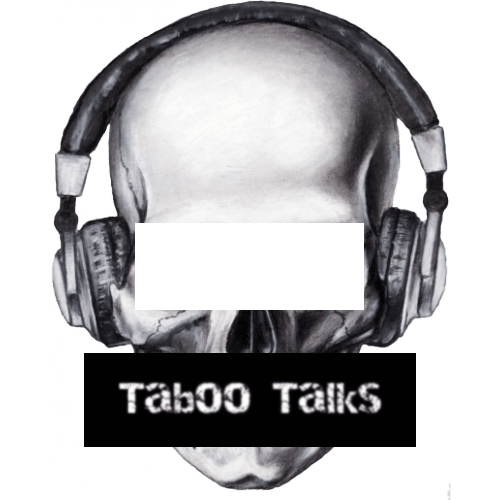The main idea behind creating Taboo Talks a public website is to let people feel free to share their experiences, ideas, views or content on topics they consider taboo.
Afghanistan peace deal between the USA, Afghanistan’s government, and Afghanistan’s Taliban is a highly complex issue. For which the whole world is waiting to happen. This deal took US President Doland Trump’s hair out, and now President Joe Biden is trying his best to keep his early presidency ego high, which will keep his head high in between the US Citizens. But is this peace Treaty easy? I will answer directly, NO. But what is this deal? What’s the Background of this deal? And the history of two-nation trying to build peace? Let us try to understand this. But before jumping towards Afghanistan’s Peace deal, let us get some crux knowledge about Afghanistan.

History of Afghanistan
Afghanistan, officially the Islamic Republic of Afghanistan, is a landlocked country at the crossroads of Central and South Asia. Pakistan borders Afghanistan to the east and south; Iran to the west; Turkmenistan, Uzbekistan, and Tajikistan to the north; and China to the northeast. They were occupying 252,000 Sq. Mi is a mountainous country with plains in the north and southwest. Kabul is the capital and largest city. Its population is around 32 million, With 90% Rural and tribal people, and the rest live in an urban area.
Political History of Afghanistan
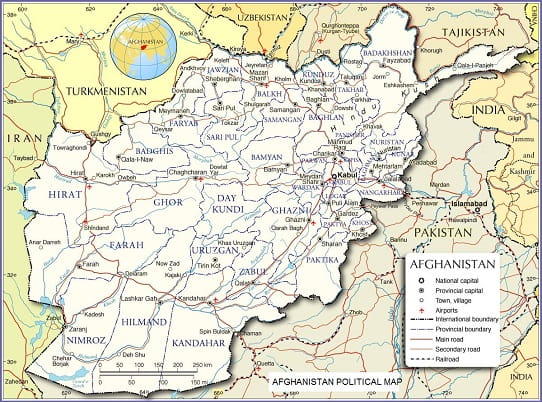
- The political history of the modern state of Afghanistan began with the Hotakdynasty, whose founder MirwaisHotak declared southern Afghanistan independent in 1709. In 1747, Ahmad Shah Durrani (Founder of modern Afghanistan) established the Durrani Empire with its capital at Kandahar. In 1776, the Durrani capital was moved to Kabul, while Peshawar became the winter capital; the latter was lost to Sikhs in 1823.
- In the late 19th century, Afghanistan became a buffer state in the Great Game between British India and the Soviet Empire.
- In the First Anglo-Afghan War (1839-1842), the British East India Company seized control of Afghanistan briefly, although Britishers lost.
- Second Anglo-Afghan war (1878-1880) Sher Ali Khan was the ruler. The Treaty of Gandamak was signed on May 26, 1879. 2nd phase of the war started in October 1879 and ended with the defeating of Ayub Khan on September 1, 1880, in the battle of Kandahar. And the Britisher won the war.
- Third Anglo-Afghan War in 1919, the country was free of foreign influence, eventually becoming a monarchy under Amanullah Khan. Monarchy rule started in Afganistan.
- Until almost 50 years later, when Zahir Shah was overthrown, and a republic was established.
- With the support and assistance of the minority political party People’s Democratic Party of Afghanistan (PDPA), a Communist party, Mohammed Daoud Khan(Prime minister since 1963)Cousin of Zahir shah had taken power in the 1973 Afghan coup d’état by overthrowing the monarchy of King Zahir Shah and had established the first Republic of Afghanistan.
- Under the secular government of Daoud, They were developed in the PDPA, with two main factions being the Parcham and Khalq faction.
- Soviet support Khalq factions and supported Mohammed Daoud khan.
- Mohammed Daoud Khan established many reforms that wanted to make the nation modern, which was not acceptable by the PDPA and the Soviet Union.
- On April 17, 1978, a prominent member of the Parcham, Mir Akbar Khyber (Trade Union leader), was murdered. PDPA leaders feared that Daoud was planning to eliminate them.
- Hafizullah Amin was put under house arrest. Amin, without authority, instructed the Khalqist army officers to overthrow the government. By April 27, 1978, another coup took placed by the PDPA using the army, monarchy ended.
- The coup started on April 27, and by evening, the state-owned radio announced that the Khalq faction overthrew the Daoud government.
- During the coup, soldiers had surrounded the palace of the president and had asked him to surrender. But Daoud Khan and his brother came out of the palace and fired at the soldiers. This led to them being shot and killed.
- In the early days of the new government, there was unity between the Parcham and the Khalq factions, although this did not last long. The new president was Nur Muhammad Taraki of the Khalq group.
- PDPA brought Land reforms, Marriage reforms, women’s rights, agriculture reforms, education reforms, health reforms, etc.
- The citizens of Afganistan did not accept this; they wanted to preserve their history, culture. They didn’t like the changes brought by the PDPA. This caused friction between PDPA communist government and Citizens.
- The Soviet Union supported the revolution brought by the PDPA, and they helped them by providing them Military aids.
- However, in September 1979, Taraki himself was overthrown and executed by Amin. The PDPA in power implemented many changes in Afghan society.
- Many current regulations were put in place, replacing the old Islamic codes. Socialism was introduced. However, there were many haphazard regulations brought in that unsettled many. Land reforms were carried in that affected the peasants adversely.
Soviet-Afghan war (1979-1989) and Operation Cyclone
Soviet-afghan war
This only alienated a large segment of the Afghan population who were still conservative in their beliefs. The PDPA, despite having strong support, lost popularity in the rural areas of Afghanistan.
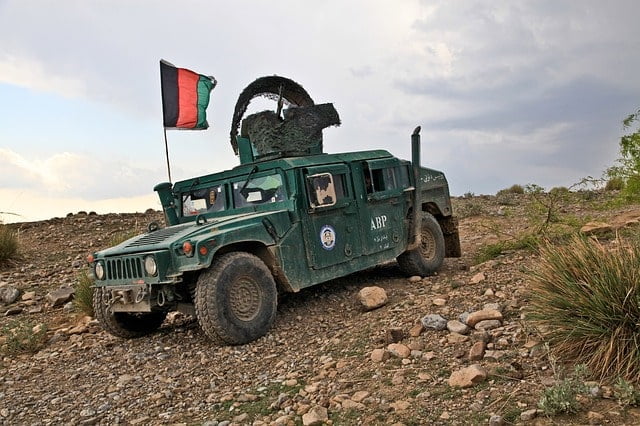
- There was severe discontent among the people, which manifested in many uprisings for the next two years. Finally, this political instability prompted the USSR to intervene, leading to the beginning of the Soviet-Afghanistan War.
- The civil war that followed between insurgent groups (called Mujahideen) and the USSR and the PDPA lasted nine years, further dragging the country back in terms of development.
- Mujahideen won this war who were trained and supported by the USA.
- Communists under the leadership of Nur Muhammad Taraki seized power in Afghanistan on April 27, 1978.
- The new regime-which was divided between Taraki’s extremist Khalq faction and the more moderate Parcham-signed a treaty of friendship with the Soviet Union in December of that year.
- Taraki’s efforts to improve secular education and redistribute land were accompanied by mass executions (including many conservative religious leaders) and political oppression unprecedented in Afghan history, igniting a revolt by mujahideen rebels.
- Following a general uprising in April 1979, Taraki was deposed by Khalq rival Hafizullah Amin.
- By December, Amin’s government had lost control of much of the country, prompting the Soviet Union to invade Afghanistan, execute Amin, and install Parcham leader BabrakKarmal as president.
The operational cyclone
In May 1979, US officials secretly began meeting with rebel leaders through Pakistani government contacts.
- Carter signed a “presidential finding” that “authorized the CIA to spend just over $500,000” on non-lethal aid to the mujahideen, which “seemed at the time a small beginning.
- Carter determined the thrust of US policy for the duration of the war in early 1980: Carter initiated a program to arm the mujahideen through Pakistan’s ISI and secured a pledge from Saudi Arabia to match US funding for this purpose.
- US support for the mujahideen accelerated under Carter’s successor, Ronald Reagan, at a final cost to US taxpayers of some $3 billion.
- The Soviets were unable to quell the insurgency and withdrew from Afghanistan in 1989.
- After the Soviet left, Mujahideen become very powerful and form a new group Taliban.
Funding by the US
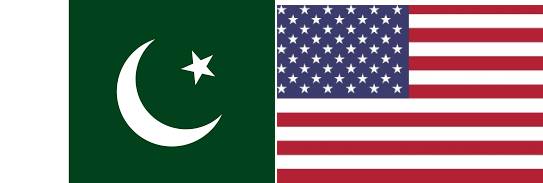
- The US offered two economic assistance packages and military sales to support Pakistan’s role in the war against the Soviet troops in Afghanistan. The first six-year assistance package (1981-87)amounted to US$3.2 billion, equally divided between economic assistance and military sales.
- The second six-year assistance package (1987-93) amounted to $4.2 billion. More than $20 billion in US funds were funnelled into the country to train and arm the Afghan resistance groups.
How Taliban rise to power in Afghanistan?

- After the Soviet Union intervened and occupied Afghanistan in 1979, Islamic mujahideen fighters engaged in war with those Soviet forces.
- Pakistan’s ISI trained about 90,000 Afghans during the 1980s.
- Afghan Civil war (1992-1996):
After the fall of the Soviet-backed regime of Mohammad Najibullah in 1992, many Afghan political parties in April agreed on a peace and power-sharing agreement, the Peshawar Accords, which created the Islamic State of Afghanistan and appointed an interim government for a transitional period;
- but that Islamic State and its government were paralyzed right from the start due to rivalling groups contending for total power over Kabul and Afghanistan.
- Hekmatyar’s Hezb-e Islami Gulbuddin party refused to recognize the interim government, and in April, infiltrated Kabulto to take control for itself, thus starting this civil war.
Taliban(1944-1996)
The Taliban are a movement of religious students (Talib) from the Pashtun areas of eastern and southern Afghanistan who were educated in traditional Islamic schools in Pakistan.
- Mullah Mohammad Omar, in September 1994 in his hometown of Kandahar with 50 students, founded the group. Omar was disappointed that Islamic law had not been installed in Afghanistan after the ousting of communist rule. With his group, he pledged to rid Afghanistan of warlords and criminals.
- Within months, 15,000 students, often Afghan refugees, from religious schools or madrasas joined the group.
Taliban rule- Talibanization
Usually strict regulation and segregation of women, including forbidding of most employment or schooling for women and girls;

- the banning of long lists of activities generally tolerated by other Muslims-movies, television, videos, music, dancing, hanging pictures in homes, clapping during sports events;
- the banning of activities (especially hairstyles and clothing) generally tolerated by other Muslims because the activities are Western or immoral; oppression of Shia, threats that they convert to Sunni Islam or be prepared to be killed;
- aggressive enforcement of its regulations, particularly the use of armed “religious police”;
- the destruction of non-Muslim artefacts, especially carvings and statues such as Buddhas of Bamyan
- Harbouring of Al Qaeda or other extremists;
- A discriminatory attitude towards non-Muslims, such as sumptuary laws against Afghan Hindus.
Taliban(1996-2001)
The military goal of the Taliban during the period 1995 to 2001 was to return the order of Abdur Rahman (the Iron Emir) by the re-establishment of a state with Pashtun dominance within the northern areas.
- The Taliban sought to establish an Islamic government through law and order alongside a strict interpretation of Sharia law. By 1998, the Taliban’s Emirate controlled 90% of Afghanistan.
- In October 2001, the United States, with allies including the Afghan Northern Alliance, invaded Afghanistan and routed the Taliban regime. The Taliban leadership fled into Pakistan.
US Intervention in 2001
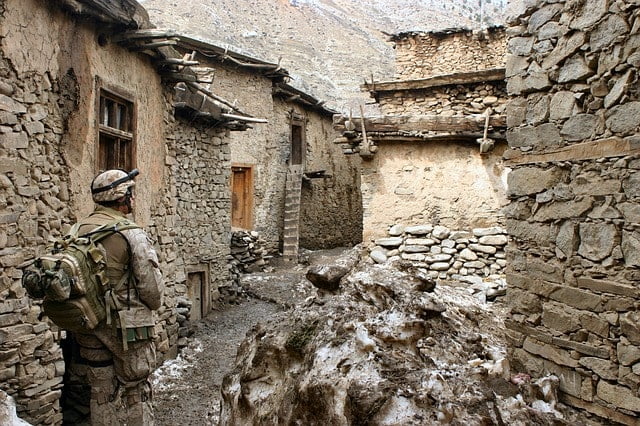
On September 20 2001, US President George W. Bush, speaking to a joint session of Congress, tentatively blamed Al-Qaeda for the 9/11 September attacks, stating that the “leadership of Al Qaeda had great influence in Afghanistan. He said was “not open to negotiation or discussion”:
- Deliver Osama bin laden and all leaders of Al-Qaeda to the US, Release all foreign nationals that have been unjust, Protect foreign journalists, diplomats, and aid workers, Close immediately every terrorist training camp imprisoned. Hand over every terrorist and their supporters to appropriate authorities, Give the United States full access to terrorist training camps for inspection.

Operation Enduring Freedom
On October 7, less than one month after the 9/11 September attacks, the US, aided by the United Kingdom, Canada, and other countries, including several from the NATO alliance, initiated military action, bombing Taliban and Al-Qaeda-related camps.
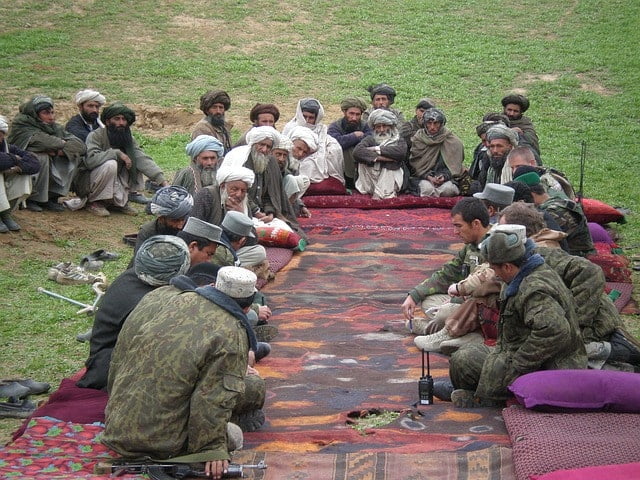
- The stated intent of military operations was to remove the Taliban from power and prevent the use of Afghanistan as a terrorist base of operations.
- After the attacks of 9/11 September 2001 on the United States, Pakistan has been accused of supporting the Taliban, an allegation Pakistan denies.
- After 13 years, on December 28 2014, President Barack Obama announced Operation Enduring Freedom in Afghanistan. Continued operations in Afghanistan by the United States military forces, both non-combat and combat, now occur under Operation Freedom’s Sentinel.
Present situation in Taliban
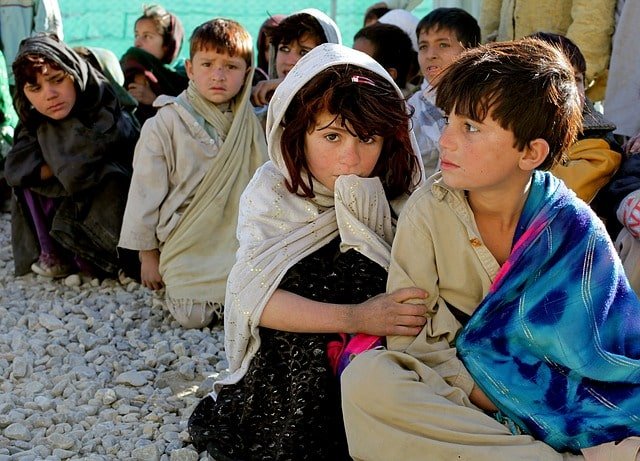
- The Taliban has withstood counterinsurgency operations from three US administrations in a war that has killed more than 2,400 Americans and 1,100 NATO troops. More than 43,000 civilians have died, and an estimated 45,000 Afghan troops and police officers were killed just in the past five years.
- Despite the Taliban’s losses, estimated to be in the tens of thousands, experts say the group is stronger now than at any point in the last eighteen years. With an estimated sixty thousand full-time fighters, it controls many of the country’s 398 districts.
- In early 2020, the Taliban controlled an estimated 18 percent of districts, while the government-controlled 33 percent
US Taliban deal

- US Taliban deal was merely an event strongly related to US President Donald trump’s Domestic policies, which could have led to Doland Trump’s re-election, but it didn’t go that way.
- US former President Doland Trump made sure he will pull out US Soldiers from middle east countries and Afganistan like he did in Syria; he pulled thousands of US soldiers out from Syria, and then he focused on Afganistan.
Trumps Pullout
The US and Taliban signed an agreement for “Bringing peace to Afganistan,” enabling the US and NATO to withdraw troops in the next 14months. This peace deal was signed in Doha.

- The US and the UN will remove all the sanctions from Afghanistan by three months (May 2020).
- President Ashraf Ghani of Afganistan is denied to release all the Taliban Prisoners, which leads to friction between the current Afganistan government and the Taliban.
- After the US presidential election and Joe Biden comes out as a winner, he wants to keep this treaty as his first victory as a US president.
- So, it’s essential for President Joe Biden and has also asked India to take some stance and Invites India for the New Afghan peace plan.
- India is trying to keep its relation with Afghanistan as reasonable as possible India has helped and improved Afghanistan Infrastructure a lot. India-Afghan relation is good, and even the Taliban don’t want to interfere in between Indian as said by Taliban said in a press interview, “No Ghazwa-E-Hind against India Kashmir is Internal matter.
- In my view, the Afghan government should lead Afghanistan, not the Taliban; if the US pulls out and the Taliban and Again situation turn out bad, this might be a problem for India as many anti-India groups might emerge, supported by Pakistan.
- U.S, India, and Afghanistan should consider all points, and peace in Afghanistan should be established.
